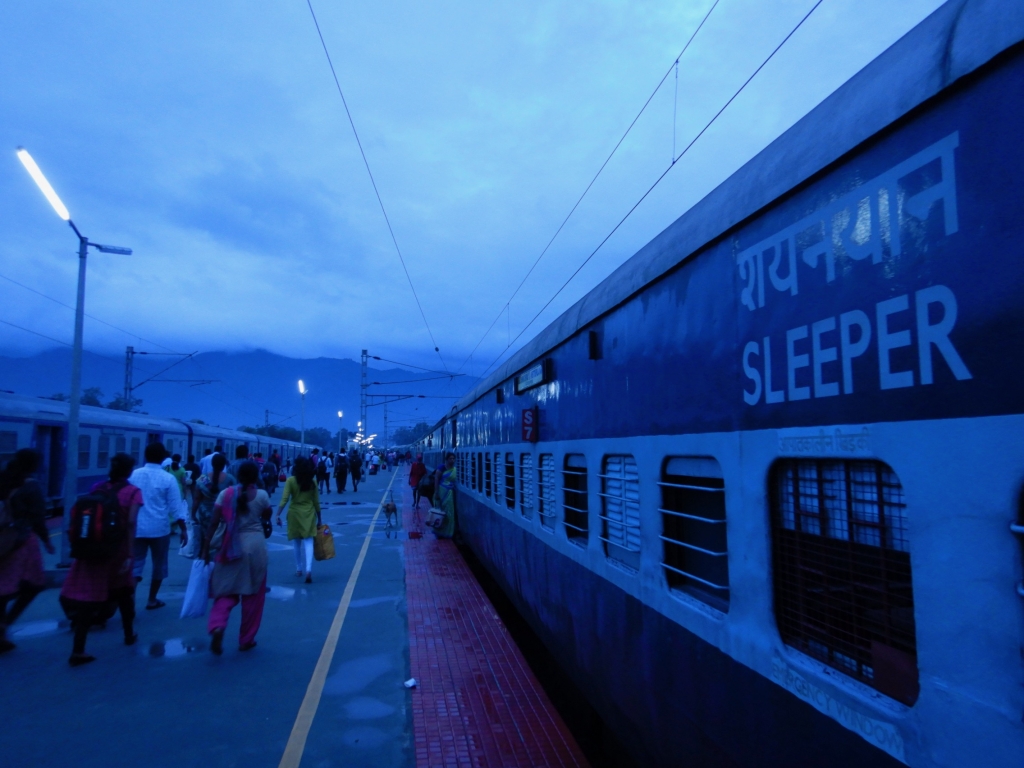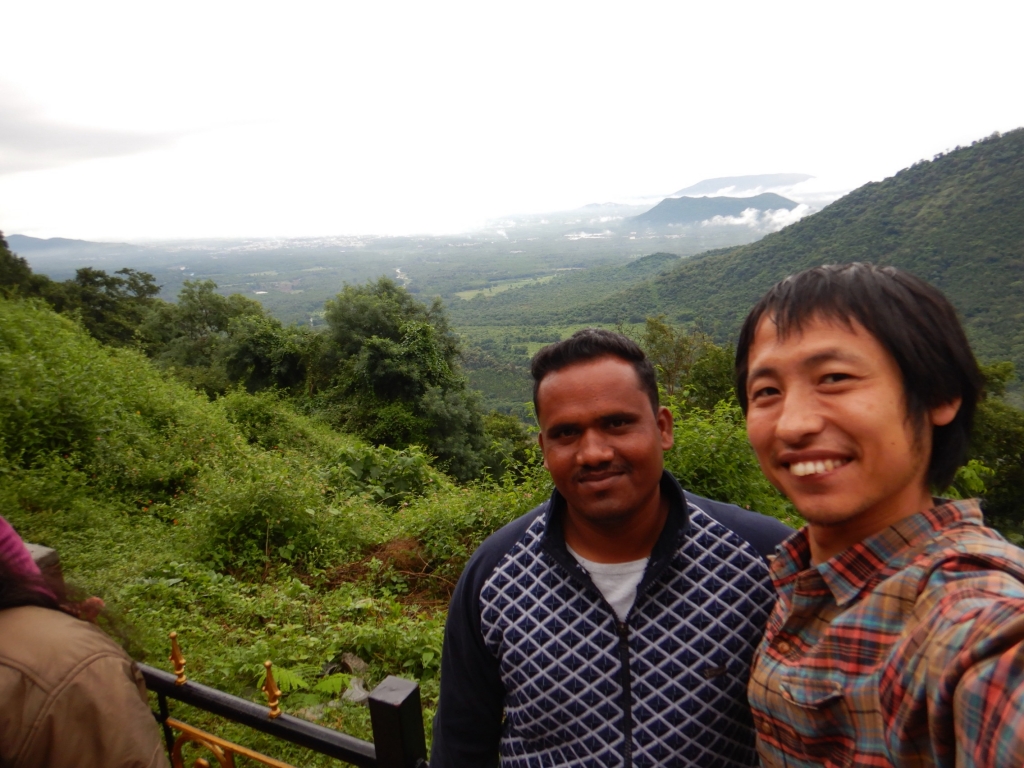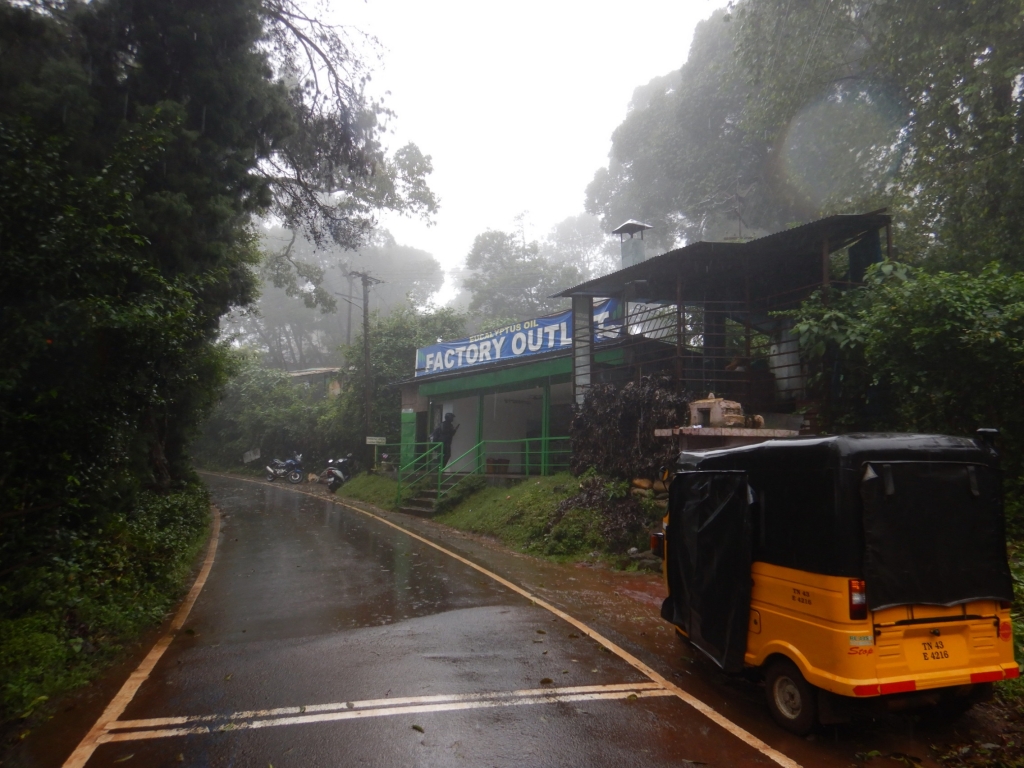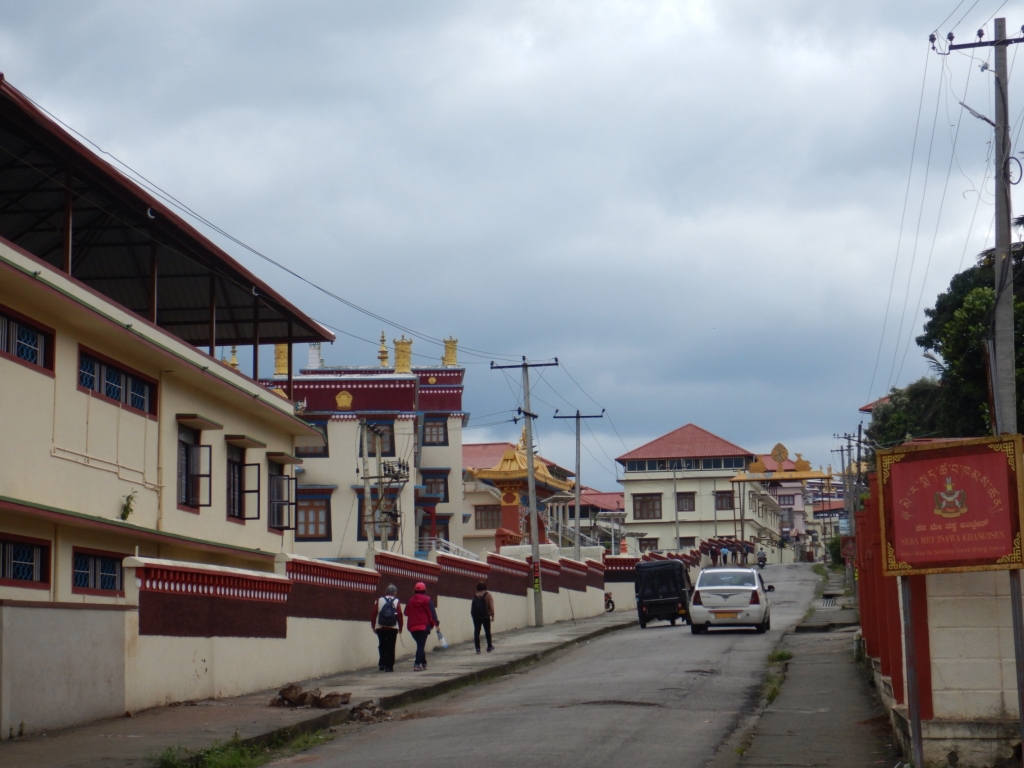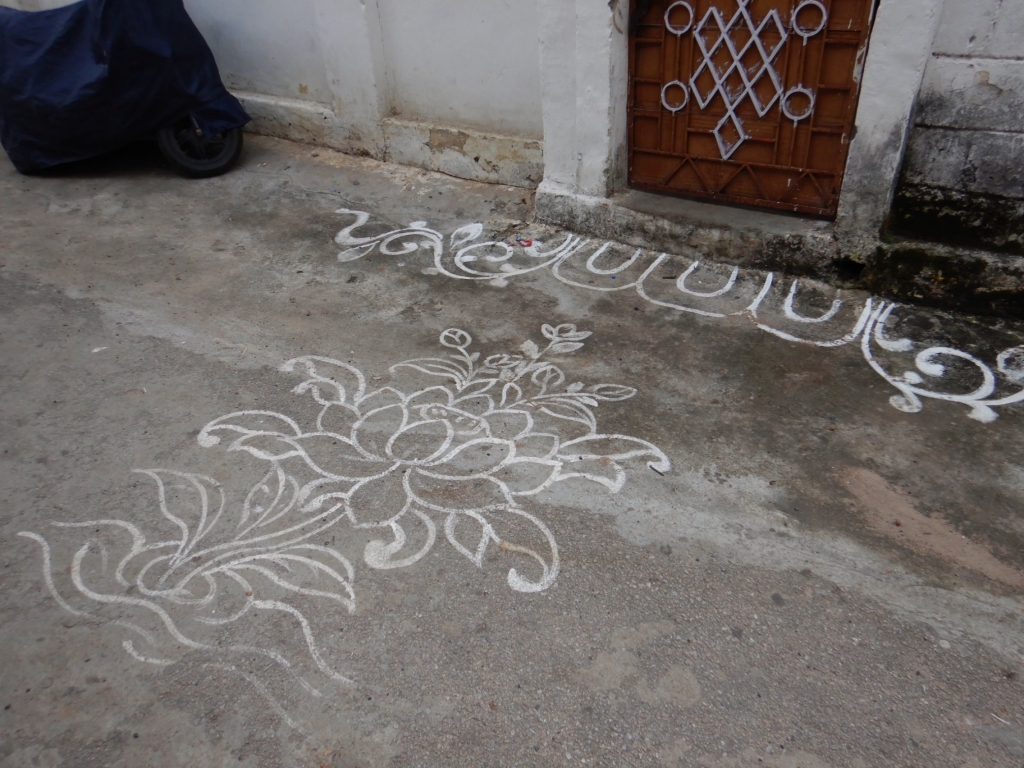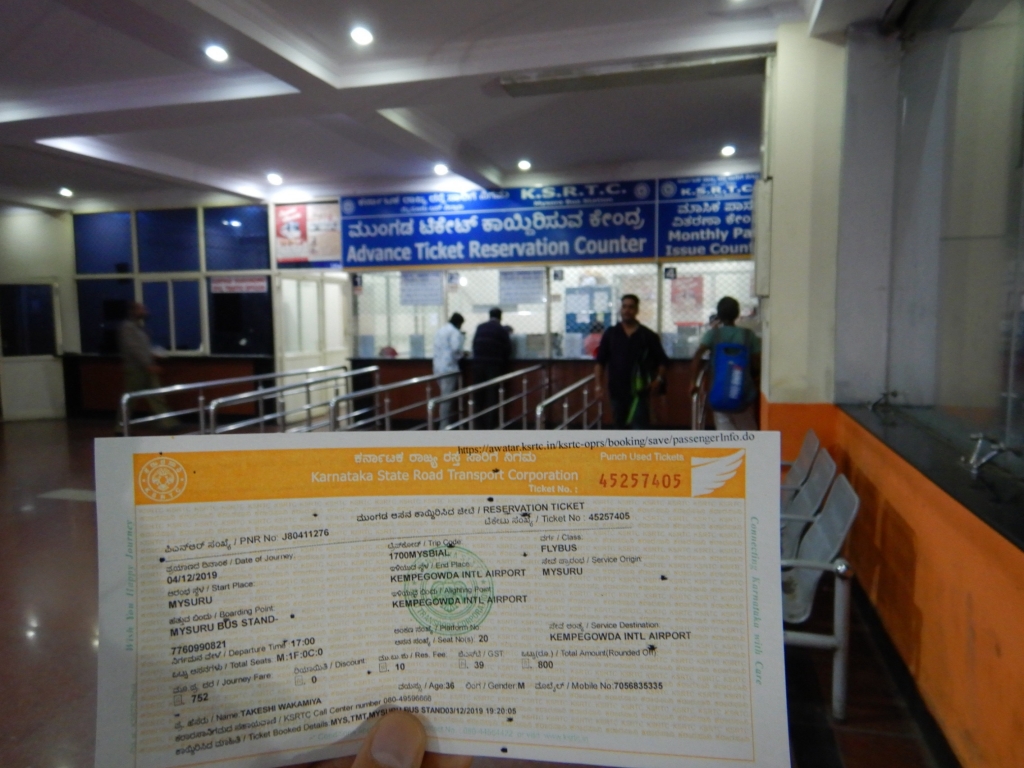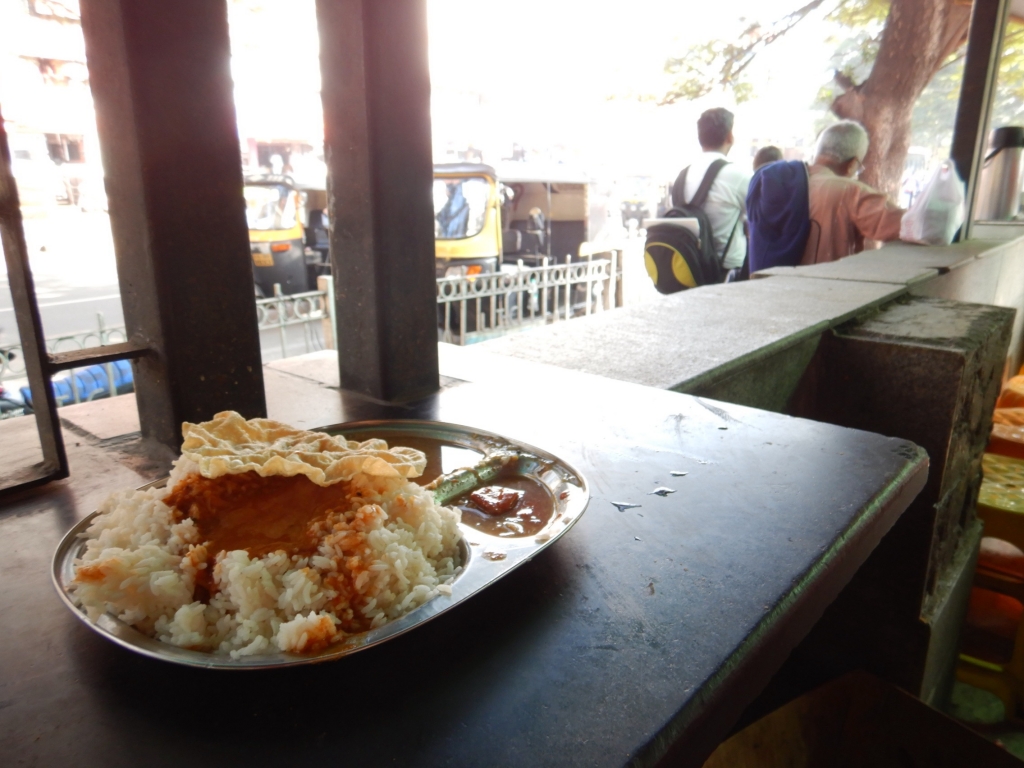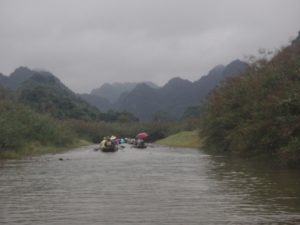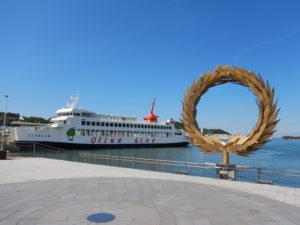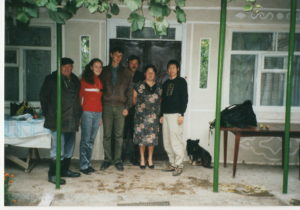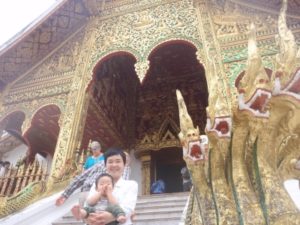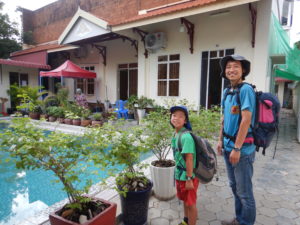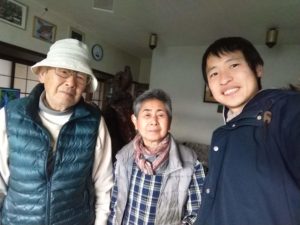南インドの旅、6泊目は夜行列車で移動です。
コインバトールを経由して、メットゥパラヤムへ。
ここから、ニルギリ山岳鉄道に乗りたい!
のですが、その車両編成は短く、本数も少なく、おまけに、乗車予定日が土曜日ということもあって、事前予約には既に失敗しています。
やむなく、バスに乗るかと腹をくくっていたものの、ダメ元で駅の窓口へ。
Spent the sixth night in a sleeper train from Thanjavur and headed to Mettupalayam via Coimbatore.
I want to take the Nilgiri Mountain Railway!
However, I already had failed to reserve the seat in advance because that train was short, ran only once, very popular and that day was Saturday, unfortunately.
I was unwillingly ready to take an alternative bus route but went to the station window for a little hope.
私「(指差して)あの列車に乗りたい。今日の。」
駅「乗車券は?」
私「ない。General(自由席)でいい。」
駅「整理券は?」
私「なにそれ?」
親切なインド人客「ほら、これやで。ホームに居る駅員にもらうんやで。」
私「なんと!」
I: “I want to take that train today.”
Station: “Do you have a ticket?”
I: “No. General (non-reserved) seat is OK.”
Station: “Do you have a numbered ticket?”
I: “What is it?”
A nice Indian tourist “Hey, this is it. I got this from the station staff at the platform there.”
I: “Great!”
確かに、ホームには駅員が居て、インド人観光客が群がっていました。
走る。
I rushed to the platform.
私「(指差して)この列車に乗りたい。」
駅「駅の窓口へ行ってください。」
私「行った。そしたら、あなたから整理券をもらえと言われた。」
駅「そうか。そこの駅長室に行きなさい。」
I: I want to take this train.
Staff “Please go to the station window.”
I: “I went. He told me to get a numbered ticket from you.”
Staff: “I see. Go to the stationmaster’s office.”
走る。
駅長室、誰も居ない!
Rushed to the stationmaster’s office.
No one was there.
Rushed back to the platform again.
私「駅長室、誰も居ませんけど。」
駅「わかった。Coonoorまでで₨350(約540円)しますけど、いいですか?」
私「いいです!」
駅「では、この車両の一番奥の席に座っていて。私が戻ってきますから、待っていて。」
I: “No one was there.”
Staff: “I see. If 350 rupees to Coonoor are affordable for you, you can take the seat.”
I: “Fantastic!”
Staff: “Fine. Please keep seated on this train. I will be back.”
こうして、仕事できそうな女性駅員との直接交渉で、乗れないと思っていたニルギリ山岳鉄道に乗ることができました。
In this way, I was able to get on the Nilgiri Mountain Railway, which I almost gave up by negotiating with this female station staff.
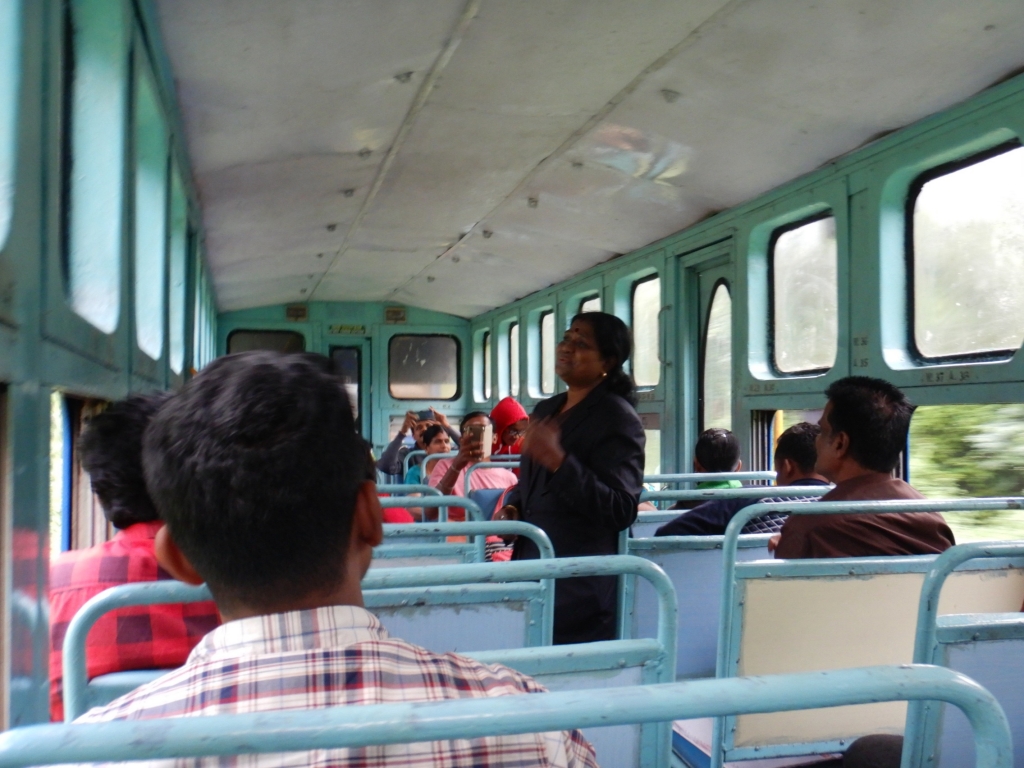
この女性駅員、駅でお別れかと思いきや、列車に乗ってきて、そのまま発車。
仕事モードの黒縁メガネを外した途端、めっちゃ明るいおばちゃんに。
そして、車内で熱唱。
歌が本当にうまくて、客も一緒に歌ったりと、楽しい山岳鉄道旅の始まりです。
This station staff was a train conductor also and the train started with her.
Once she removed her black-rimmed glasses for work, she became a cheerful local lady.
Moreover, she began singing Indian songs for passenger’s requests.
Her song was so nice and some Indian passengers also sang together.
A fantastic mountain train journey started.
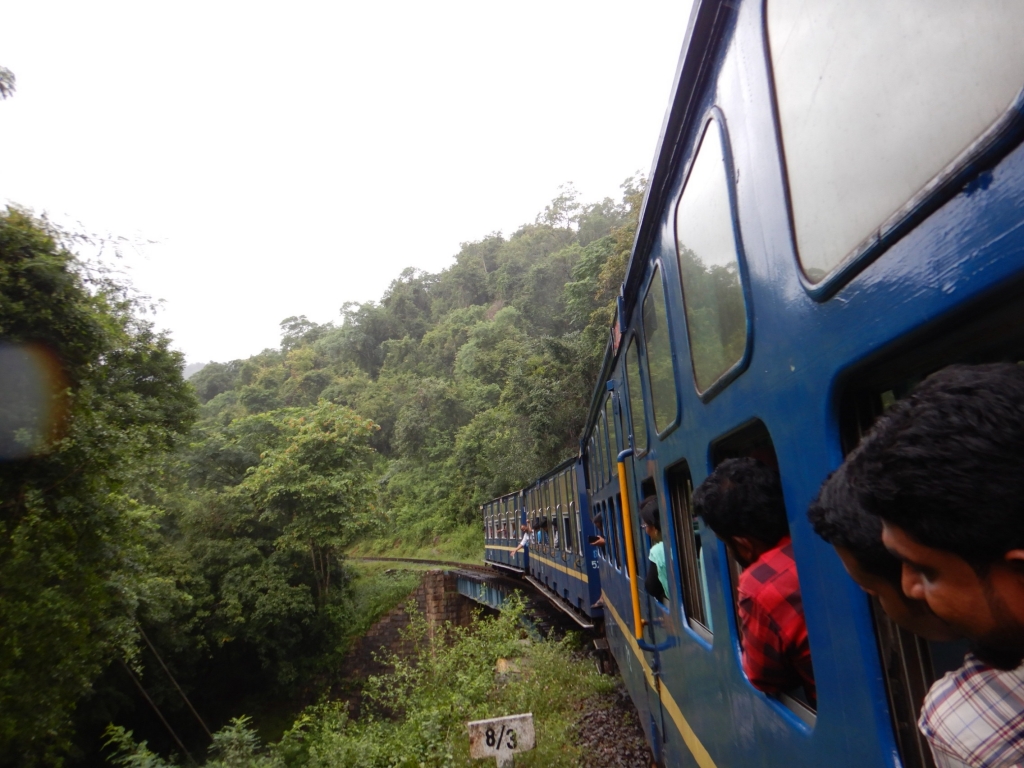
列車はぐんぐん、標高を上げ、山岳地帯へと入っていきます。
The train climbs up and goes into the hilly highlands.
列車で仲良くなった、インド人観光客のお兄さん。
ムンバイの近くのプネーから来たそうで、「この列車の乗客たちのほとんどはタミル語で話しているけど、俺にはさっぱりわからんのだ」と言っていました。
プネーのあるマハーラーシュトラ州の公用語はマラーティー語で、ニルギリ山岳鉄道の走るタミル・ナードゥ州の公用語はタミル語なのです。
With an Indian tourist.
He is from Pune near Mumbai and said “Most of the passengers speak Tamil, but I don’t understand it at all.”
The official language of Maharashtra State, where Pune is located, is Marathi and the official language of Tamil Nadu State, where the Nilgiri Mountain Railway runs, is Tamil.
That was why he spoke to other passengers in English as I did.
大半の乗客は終点のウーティーまで乗っていきますが、私は途中のクーノールで私は降ります。
Most of the passengers continued the train ride to the terminal “Ooty” but I got off at “Coonoor” on the way.
どしゃ降りのクーノールの山道を歩いていると、FACTORY OUTLET(工場の直売所)を発見。
この地方特産のお茶(スパイス入りのマサラティー)をお土産に買いました。
While I was walking along the hilly road in Coonoor in heavy rain, found a “FACTORY OUTLET”.
I bought a bag of chai (local spicy masala tea) for a souvenir.
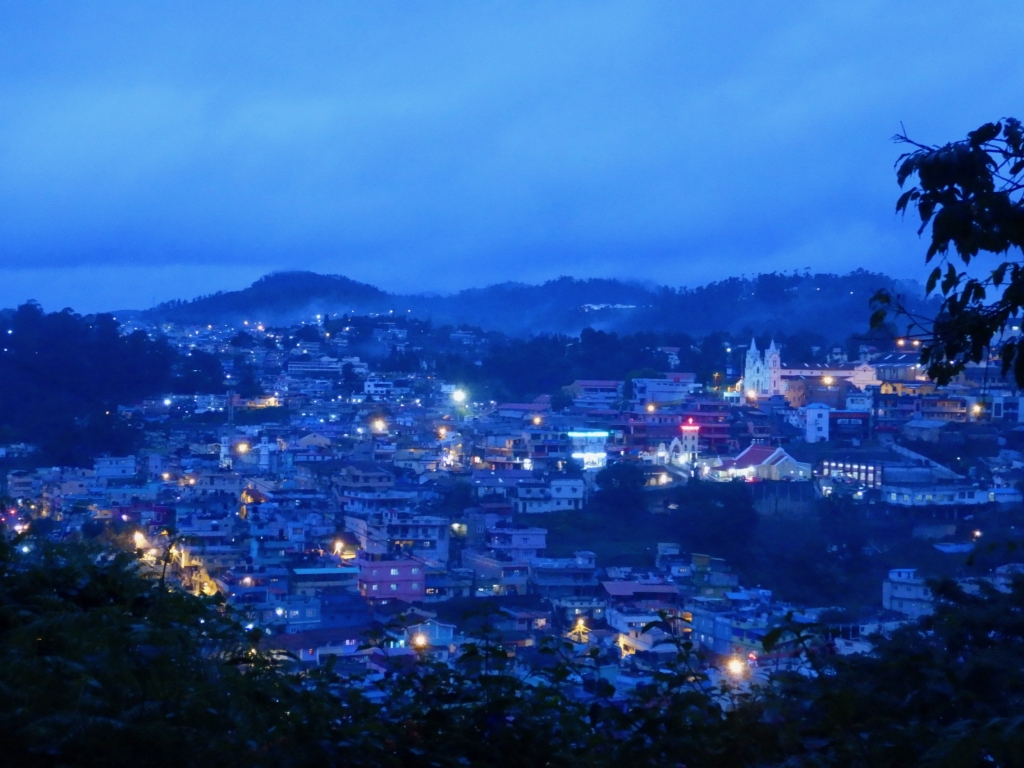
夕暮れどきのクーノールの街並み。
この町にやってきて、正解だったなと思いました。
Coonoor village at dusk.
I was sure that this town was the best place to overnight.
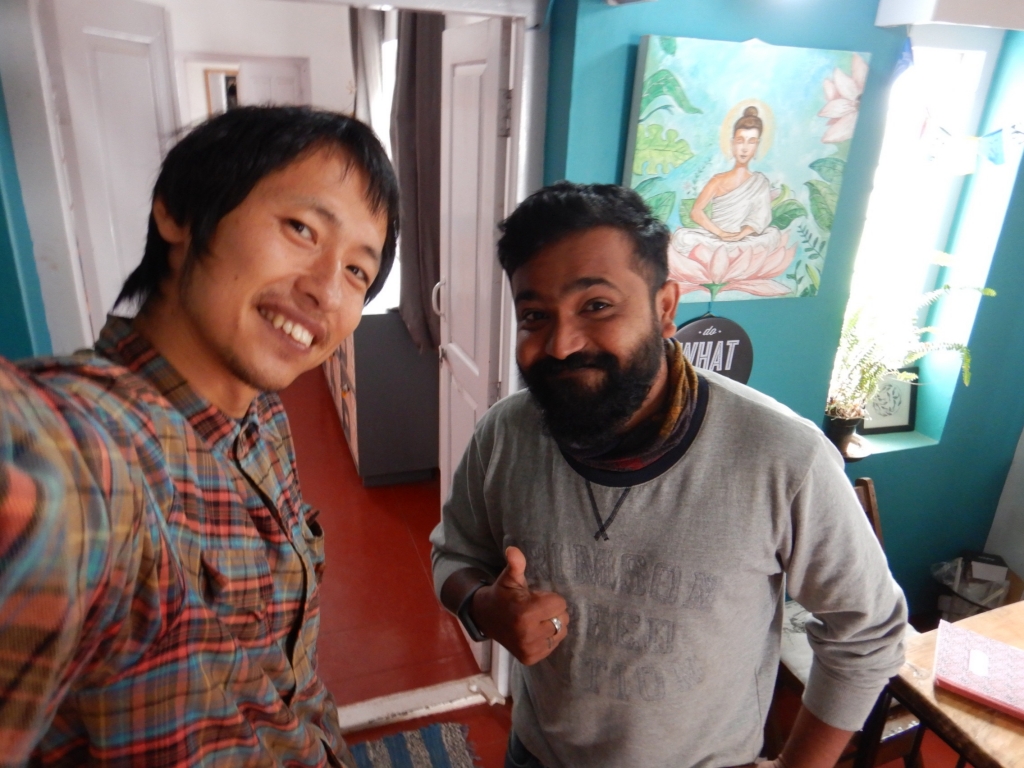
クーノールで泊まったゲストハウスのオーナーと。
こうやってゲストハウスオーナーと話をすると、国は違えど、「同志」という気がします。
With the owner of the guesthouse where I stayed at Coonor.
Even in a different country, whenever I talk with a guesthouse owner and share similar experiences at the same work, we can feel like a “friend”.
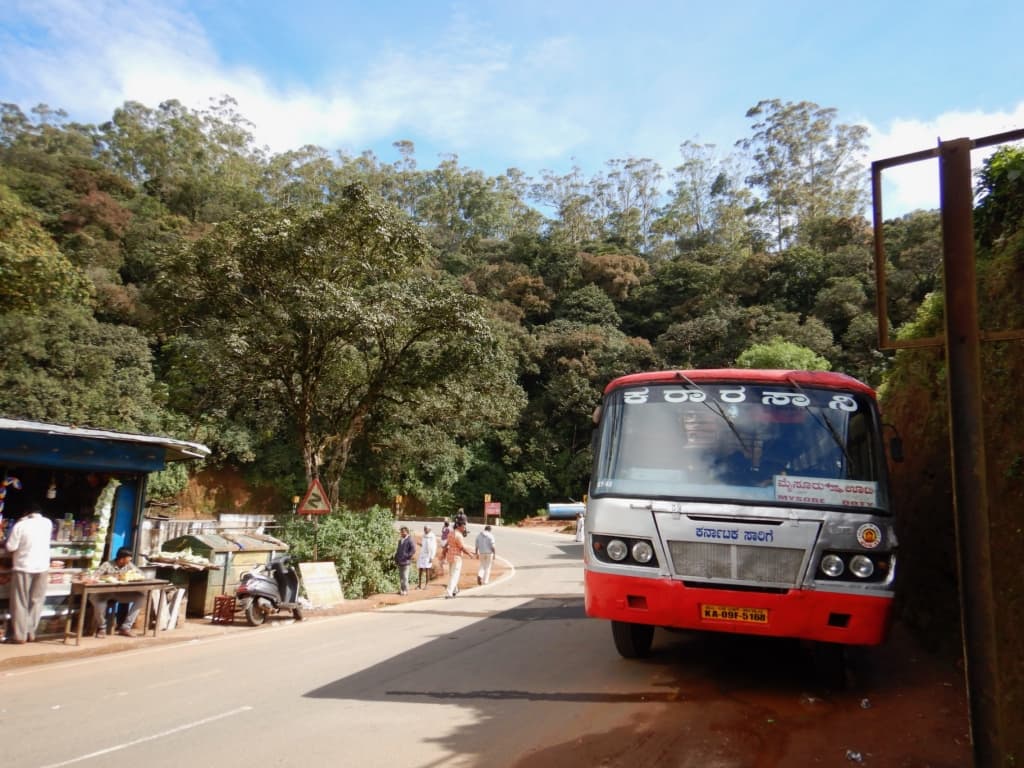
翌日、バスに乗ってマイソールへ向かいます。
タミル・ナードゥ州からカルナータカ州に入り、表記がタミル語からカンナダ語に変わりました。
The next day, took a bus to Mysore.
Once entered to Karnataka State from Tamil Nadu State, language and characters changed from Tamil to Kannada.
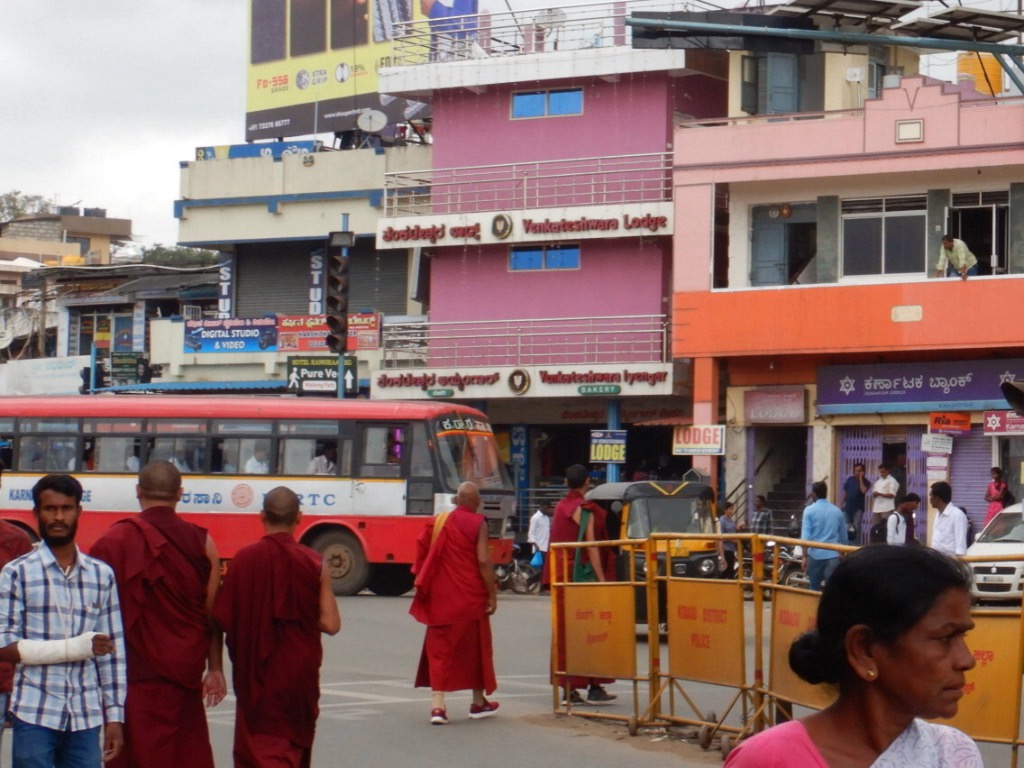
マイソールに着いた翌日は、バスに乗って、クシャルナガールへ。
するとそこは、チベットへの入り口でした。
On the next day in Mysore, took a bus to Kushalnagar.
Then it was the entrance to Tibet.
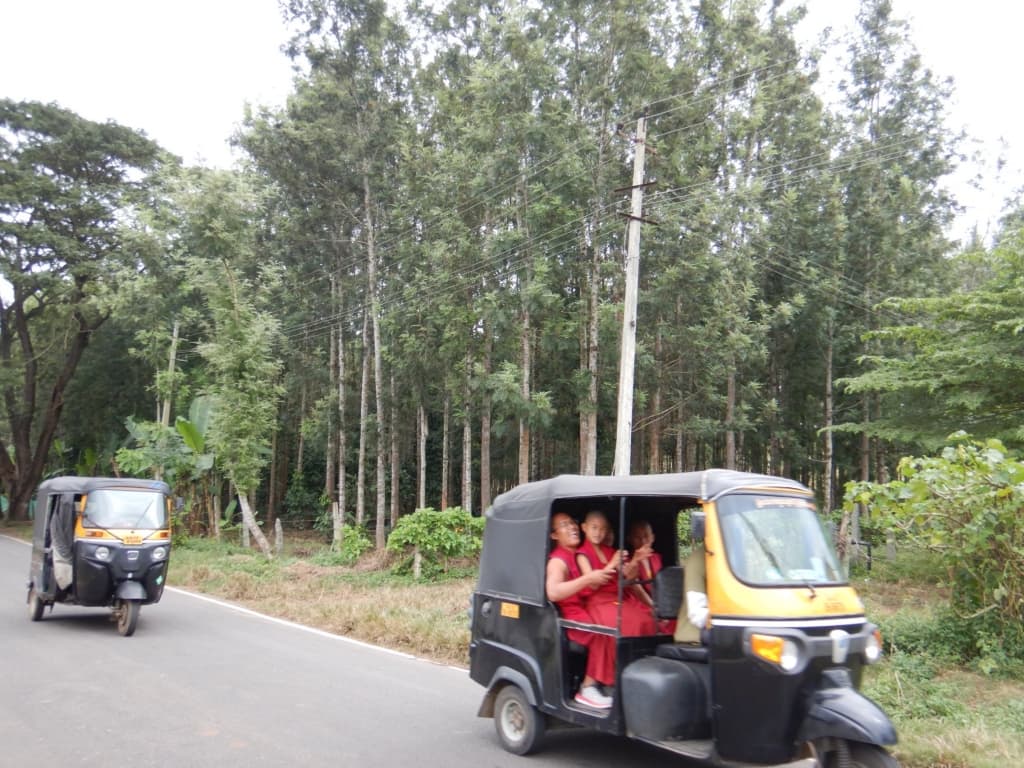
そこからさらに、オートリクシャーで向かったのが…
From Kushalnagar, where I headed for by auto-rickshaw was…
ここ、バイラクッペ。
1959年のチベット動乱から逃れてきたチベット人たちの一部が移り住んできた町です。
ごく小さなエリアですが、異世界にワープしてきたような気分です。
Bylakuppe.
It is a town where a part of Tibetan refugees immigrated at the disturbance in Tibet (1959).
I felt as if I had stayed in a somewhere different world.
ヒンドゥー教のチョーク絵、コーラムは、お釈迦様の蓮の花になっています。
町には僧院が立ち並び、人々はチベット語を話し、バナナ畑にはタルチョがなびいていました。
The Hindu chalk painting “Kolam” changes to Buddha’s lotus flower here.
The monasteries stand in a row, people speak Tibetan, and darchog (the prayer flags) flies over the banana field.
チベットの町から再び、マイソールへとバスで戻ってきました。
バスターミナルで、翌日、ベンガルールのケンペゴウダ国際空港に行くためのバスチケットを買います。
もう、旅が終わってしまう。
Came back from Tibetan town to Mysore by bus and bought a bus ticket for the Kempegowda International Airport in Bengaluru.
My journey is closing…
旅の最後のメシに選んだのはこちら、バスターミナル隣接の立ち食い食堂。
The place for the last meal in my South Indian journey was this standing food stand next to the bus terminal.
ライス サンバルのフルサイズ、35₨(約60円)。
みごと、正解でした。
Rice Sambar, full size, 35 rupees.
It was a really correct choice!
ベンガルールから香港を経由し、高松へと帰ります。
また、南インドに来よう。
I came back home in Takamatsu from Bengaluru via Hong Kong.
See you again, South India!
おしまい。

